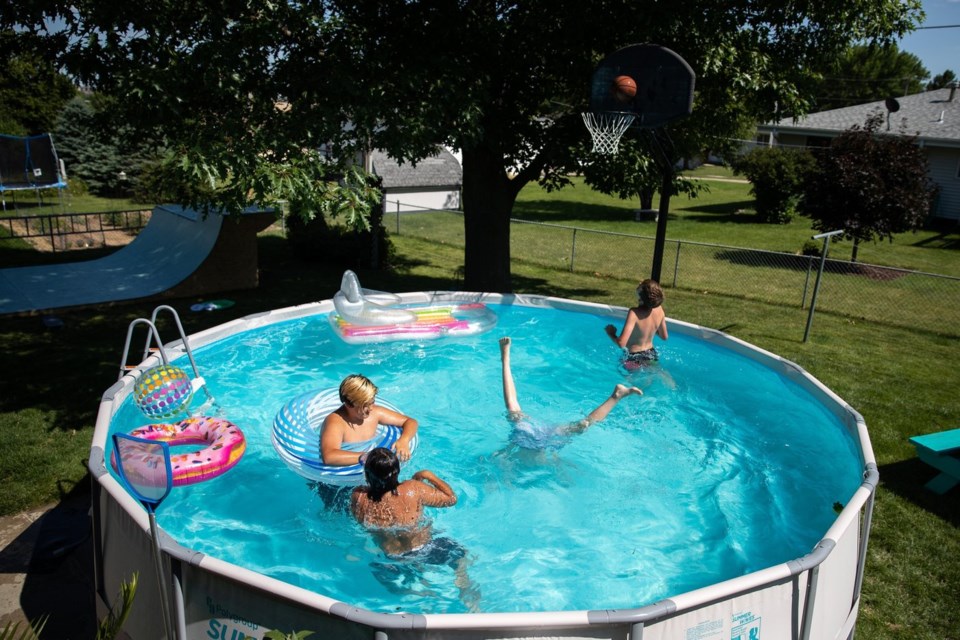NEW YORK (AP) — Americans have one more reason to celebrate : getting all the gear needed to host a pool party costs less than it has in years, according to a market research company's preliminary data.
The total price to buy beach towels, a beverage cooler, and other accountrements of summer fun averaged $858 in June, the lowest amount for the month since 2020, consumer data provider Numerator said in an analysis prepared for The Associated Press.
The finding from the firm's seasonal snapshot comports with indicating that U.S. consumers so far have not seen major impacts from President Donald Trump's on foreign goods.
Numerator tracks U.S. retail prices through sales receipts, online account activity and other information from a panel of 200,000 shoppers. To see how prices are shaping up for the summer, the company looked at the average purchase price for 16 seasonal items typically .
Along with four towels, a cooler and bathing suits for two adults and a toddler, the hypothetical shopping list for included a grill, four patio chairs, four cushions, a patio umbrella and four outdoor pillows. Recreation supplies included a cornhole set, two pairs of swim goggles, a set of diving rings, two beach balls and two pool floats or noodles.
Leo Feler, Numerator’s chief economist, offered a few theories for why buying all that stuff cost 11% less last month than it did in June 2023, when the average cost reached a high of $966, and 8.4% less than it did in June 2024.
Wholesale suppliers and retailers that order from Chinese manufacturers may have imported too much stock while trying to , Feler said. As pointed to the possibility of , those businesses might have offered early discounts rather than risking their merchandise going unsold, he said.
Given wide swings in Trump’s , retail vendors may have decided to absorb any initial tariff costs instead of trying to figure out how much more to charge their business customers, Feler said. The tariff rate on Chinese products soared to 145% in April before China and the U.S. reached a deal last month that brought the overall rate down to 55%.
Suppliers often work on six-month contracts that are signed in January or February and again in June or July. That means many contracts for patio tables and chairs, for example, were signed before the White House included metal furniture in the aluminum or steel products that would be subject to a 25% tariff that went up to 50% last month.
Customers who want to buy a new set of beach towels or to replace an old cooler still might want to hold off until August since prices will get lower in late summer, Feler said. But waiting until next year may prove costly, if the tariffs on products from China remain in place, he said.
Just because preparing for a backyard bash might be comparatively less expensive right now, many economists and retail industry analysts still expect consumers to of Trump's favorite trade negotiation tool. Shoppers are likely to see higher prices for back-to-school items starting in July and August, according to Feler.
The time it's taking for the extra taxes on imports to reach stores could turn out like the pandemic-induced supply chain disruptions that contributed to U.S. inflation in 2021 and 2022.
“It wasn’t like there was a sudden surge," Feler said. "It was a few prices increased here, then a few more prices, and a few other prices, and a couple more prices. And it started gaining speed.”
Anne D'innocenzio, The Associated Press


